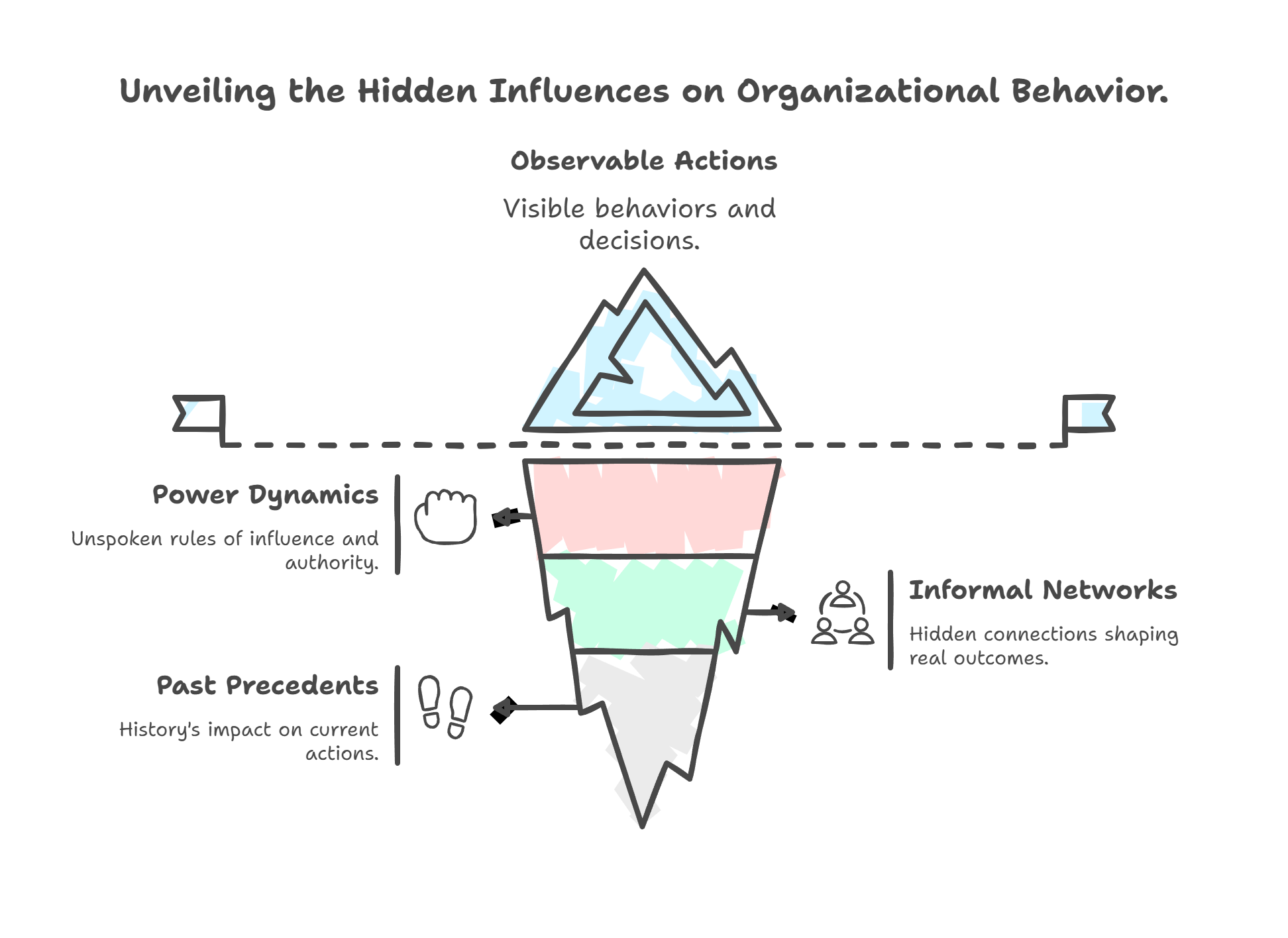How to Build a Culture That Actually Compounds Your Market Value
Warning: This article contains zero mentions of ping-pong tables, free snacks, or “work hard, play hard” mantras. If that’s what you’re looking for, LinkedIn has plenty of feel-good fluff for you.
Here’s the uncomfortable truth your HR consultant won’t tell you: 87% of companies claim to have a “strong culture,” yet 62% of employees are actively planning their escape. That’s not culture; that’s collective delusion dressed up in corporate speak.
The real scandal? Most SME leaders treat culture like interior decoration – something nice to have after the “real work” of business is done. They’re polishing the doorknobs while the foundation crumbles. They’re arranging deck chairs on the Titanic while humming their mission statement.
Let me be clear: Culture isn’t what you say. It’s what you tolerate. And right now, most of you are tolerating mediocrity wrapped in motivational posters.
The 75% Lie: Why “Culture-First” Hiring is Backwards
Yes, 75% of job seekers consider culture before applying. But here’s what the surveys don’t tell you: they’re not looking for your culture – they’re looking for the absence of toxicity. That’s like saying people choose restaurants based on “not having food poisoning” as a key differentiator.
When 56% value culture over salary, they’re not applauding your “collaborative environment” or “innovative spirit.” They’re desperately hoping you won’t make their lives miserable for 40+ hours a week. That’s not attraction; it’s damage limitation.
The Contrarian Truth: Stop trying to attract talent with culture. Instead, build something so remarkable that talent creates the culture for you.
Seth Godin calls it the Purple Cow – being worth talking about. Jay Abraham calls it preeminence – becoming the only logical choice. But most SMEs? They’re painting their regular cows purple and wondering why nobody’s impressed.
Here’s the radical reframe: Culture doesn’t attract talent; purpose does. And purpose isn’t a mission statement. It’s the measurable dent you’re making in the universe.
Your move: Stop decorating your culture and start doing something worth joining. Create a movement, not a workplace. Build a cause, not a company.
The 62% Exodus: The Retention Revolution Nobody’s Having
The statistics are damning: 62% cite toxic culture as their reason for leaving, outranking salary (59%), poor management (56%), and work-life balance (49%). But here’s the plot twist everyone’s missing – they’re all the same problem.
Toxic culture IS low salary (when you don’t value contribution). Toxic culture IS poor management (when accountability goes missing). Toxic culture IS poor work-life balance (when everything’s urgent because nothing’s important).
The real problem? You’re trying to fix symptoms while the disease spreads. It’s like giving aspirin to someone with a broken leg.
The Uncomfortable Solution:
Fire your culture, not your people.
Most retention strategies are backwards. They focus on keeping people instead of creating reasons to stay. That’s the business equivalent of begging someone not to break up with you. Desperate, ineffective, and slightly pathetic.
Here’s what actually works:
- The 10x Rule: Every role should create 10x its cost in value. If it doesn’t, eliminate the role, not the person. This forces radical clarity about what actually matters.
- The Preeminence Principle: Make your employees’ success more important than your company’s success. Counterintuitive? Only if you think small. When people know you’ll sacrifice for their growth, they’ll bleed for your mission.
- The Exit Interview Paradox: Conduct exit interviews with people who STAY. Find out what almost made them leave. That’s where your real culture problems hide.

Retain Top Performers by Fixing The Invisibles and Your Culture
Netflix doesn’t have low turnover because of great culture. They have strategic turnover because they’re honest about it. Their “adequate performance gets a generous severance” policy isn’t cruel; it’s clear. And clarity beats comfort every time.
The 76% Productivity Myth: Why Happy Workers Aren’t Necessarily Productive Ones
Sure, 76% say positive environments boost productivity. But correlation isn’t causation, and happiness isn’t performance. Some of the most “positive” cultures produce the most mediocre results.
The Brutal Reality: Comfort kills productivity faster than conflict ever could.
The most productive cultures aren’t the happiest; they’re the most aligned. They have what I call “Productive Tension” – the perfect balance between challenge and support, between standards and safety.
Think about elite military units. Nobody joins the Navy SEALs for the “positive work environment.” They join for the opportunity to become exceptional through shared suffering and collective achievement. That’s culture at its most powerful – not comfortable, but transformative.
For SMEs, this means:
- Replace consensus with conviction: Stop seeking agreement. Seek alignment around non-negotiables.
- Measure output, not input: Nobody cares about your “collaborative process” if it produces mediocre results.
- Celebrate conflict: Productive disagreement beats destructive agreement every time.
Amazon’s “Day 1” mentality isn’t about being nice; it’s about being necessary. Their culture of “disagree and commit” produces more innovation than a thousand team-building exercises ever could.
The Work Definition Dilemma: Your Core Values Are Probably BS
“Integrity.” “Excellence.” “Innovation.” “Teamwork.”
Congratulations, you’ve just described every company ever. These aren’t values; they’re the business equivalent of saying you’re “looking for someone with a good sense of humor” on a dating profile.
Meaningless, unmeasurable, and utterly forgettable.
Real values have teeth. They bite. They exclude more people than they include. They cost you customers, employees, and opportunities – and you choose them anyway.
Bridgewater’s “radical transparency” means recording every meeting. That’s insane to most people. That’s the point.
Amazon’s “customer obsession” means killing profitable products that don’t serve customer needs. That’s expensive. That’s the point.
Basecamp’s “no growth at all costs” means staying small when they could scale. That’s limiting. That’s the point.
Your core values should make at least 50% of people uncomfortable. If they don’t, they’re not values; they’re wishes.
Here’s how work really gets done, despite your mission statement:
- Power dynamics trump stated values: Watch who gets promoted, not what gets preached
- Informal networks beat formal processes: The real decisions happen in corridors, not conferences
- Precedent predicts behaviour: What you did last time determines what happens next time

What Is Invisible Matters The Most When It Comes To Culture, Behaviours and Performance
Want to change how work gets done? Change what gets rewarded. Period.
The Purpose Propaganda: Why Your “Why” is Probably a Lie
Simon Sinek sold us on “Start with Why,” but most SMEs end up with “Start with Why Not?” – a vague, feel-good statement that could apply to any business in any industry at any time.
“We exist to deliver excellence and create value for our stakeholders while making a positive impact on our community.”
That’s not a purpose; that’s word salad. It’s the mission statement equivalent of elevator music – present but not memorable, filling space but not minds.
True purpose is painful. It forces choices. It eliminates options. It makes enemies.
Tesla’s purpose isn’t to “make great cars.” It’s to accelerate sustainable transport, even if it means alienating dealers, challenging regulations, and betting the company on unproven technology.
Purpose without sacrifice is just poetry. And poetry doesn’t drive behaviour; pain does.
The multiplication effect of real purpose:
- It attracts zealots, not employees: People who believe, not just people who need jobs
- It repels the wrong customers: Saving you from profitable distractions
- It simplifies decisions: When the purpose is clear, choices become obvious
- It compounds the advantage: Every action reinforces the same direction
But here’s the kicker: Purpose without performance is just pretence.
WeWork had purpose. Theranos had purpose. They also had fraud, failure, and fantasy economics. Purpose isn’t enough. You need purpose plus proof, mission plus metrics, vision plus value.
The Success Multiplier: Culture as Competitive Moat
Here’s where it gets interesting. Culture isn’t just about internal operations; it’s about market position. A truly distinctive culture becomes impossible to copy, creating what Warren Buffett calls a “moat” around your business.
But most SMEs build puddles, not moats.
The compound effect of culture done right:
- Lower customer acquisition costs: Your employees become evangelists
- Higher pricing power: Customers pay premiums for alignment with values
- Reduced competitive pressure: Others can copy your product, not your people
- Accelerated innovation: Psychological safety plus high standards equals breakthrough thinking
Zappos doesn’t sell shoes; they sell a service culture so strong that Amazon bought them just to learn from it. Their 4-week paid “quit bonus” for new employees isn’t generous; it’s genius. It ensures only believers stay.
The Strategic Culture Stack for SMEs:
- Foundation: Non-negotiable behaviours (what gets you fired)
- Framework: Decision principles (how choices get made)
- Fuel: Recognition systems (what gets celebrated)
- Feedback: Measurement mechanisms (what gets improved)
- Future: Evolution protocols (how culture adapts)

Building A Strategic Culture Is A Process That Doesn’t Stop
This isn’t feel-good fluff. This is systematic culture engineering. And it’s the difference between companies that last and companies that merely exist.
The Implementation Imperative: From Theory to Theology
Enough theory. Here’s your 90-day culture transformation blueprint:
Days 1-30: The Audit
- Survey exit interviews from the last 2 years
- Identify the three behaviours that actually get rewarded (not what you claim to reward)
- Find the gap between stated and actual values
- Calculate the cost of cultural misalignment in hard dollars
Days 31-60: The Purge
- Fire toxic performers, regardless of results
- Eliminate policies that contradict core values
- Kill traditions that celebrate the wrong behaviours
- Stop hiring for “culture fit” and start hiring for “culture add”
Days 61-90: The Foundation
- Define three observable, measurable cultural behaviours
- Create systems that make these behaviours inevitable, not optional
- Implement radical transparency about cultural violations
- Celebrate the first person who chooses values over profit
The Uncomfortable Conclusion
Culture isn’t built; it’s revealed. It’s not what you aspire to; it’s what you accept. And right now, most of you are accepting mediocrity dressed up as “best practices.”
The choice is binary: Build a culture that compounds value or accept one that destroys it. There’s no middle ground, no safe harbour, no partial credit.
Your culture is either a competitive advantage or a competitive disadvantage. It’s either attracting the future or protecting the past. It’s either worth discussing or worth disguising.
The question isn’t whether you have a culture problem. You do. The question is whether you have the courage to fix it.
Because here’s the final truth: Your competition is hoping you’ll keep your current culture. It makes their job easier.
Don’t give them that satisfaction.
Build something worth believing in, or prepare to be forgotten.
The market doesn’t care about your intentions, your history, or your excuses.
It only cares about your impact.
Make it count.
P.S. If this article made you uncomfortable, good. Comfort is the enemy of culture. Now stop reading and start changing. Your future employees – the ones who will build your empire – are waiting for something worth joining. Don’t make them wait much longer.

